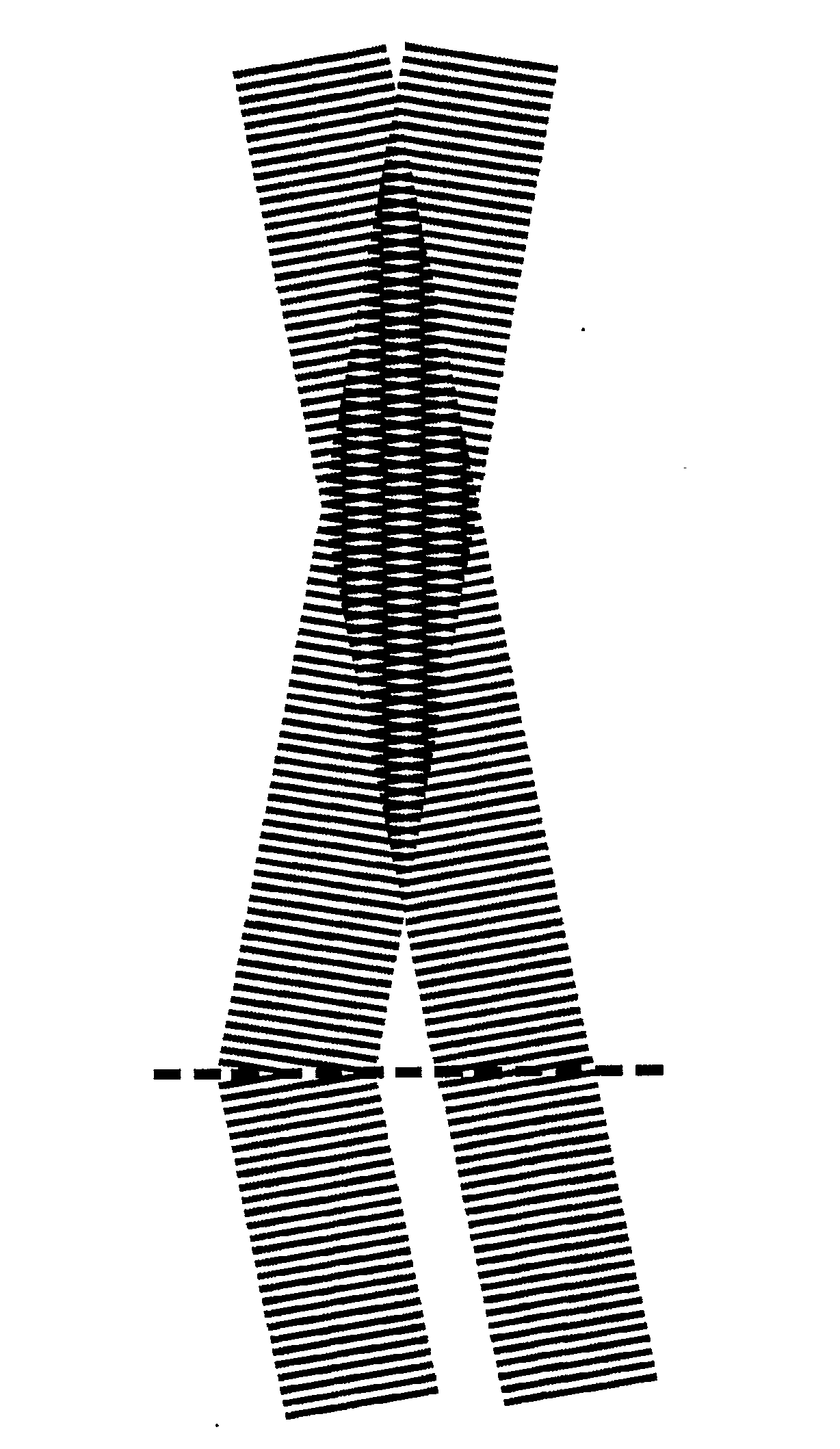High Precision Code Plates and Geophones
a high-precision, geophone technology, applied in the direction of instruments, measurement devices, seismic signal receivers, etc., can solve the problems of limited resolution, difficult practical use, limited the precision of measurements made with conventional code plate systems to about 100 nm, etc., to achieve high accuracy, enhance precision, and accurately resolve high spatial frequencies
- Summary
- Abstract
- Description
- Claims
- Application Information
AI Technical Summary
Benefits of technology
Problems solved by technology
Method used
Image
Examples
examples and experimental
RESULTS
[0031]Gratings having periods of 1.1 and 0.56 μm have been imaged using the novel technique. The gratings were imaged onto an NTSC format video camera with an Olympus microscope, and frames were “grabbed” for later analysis. The microscope had a 50× objective with an NA of 0.8, a 100× air objective with an NA of 0.9, and a 100× oil immersion objective with an NA of 1.30. Images were taken in white light, and in transmitted HeNe laser light at 0.6328 μm, using Talbot illumination, oblique illumination, and the novel two-beam oblique illumination. We successfully imaged the 0.56 μm period grating at the lowest NA used, 0.8, with both oblique and two-beam oblique illumination, even though the illuminating wavelength was longer than the period of the grating. See FIGS. 5a and 5b of priority application 60 / 753,140. Using Talbot imaging, multiple Talbot images were observed, contaminated by strong coherent artifacts. Strong coherent artifacts were also observed with single beam obl...
PUM
 Login to View More
Login to View More Abstract
Description
Claims
Application Information
 Login to View More
Login to View More - R&D
- Intellectual Property
- Life Sciences
- Materials
- Tech Scout
- Unparalleled Data Quality
- Higher Quality Content
- 60% Fewer Hallucinations
Browse by: Latest US Patents, China's latest patents, Technical Efficacy Thesaurus, Application Domain, Technology Topic, Popular Technical Reports.
© 2025 PatSnap. All rights reserved.Legal|Privacy policy|Modern Slavery Act Transparency Statement|Sitemap|About US| Contact US: help@patsnap.com



